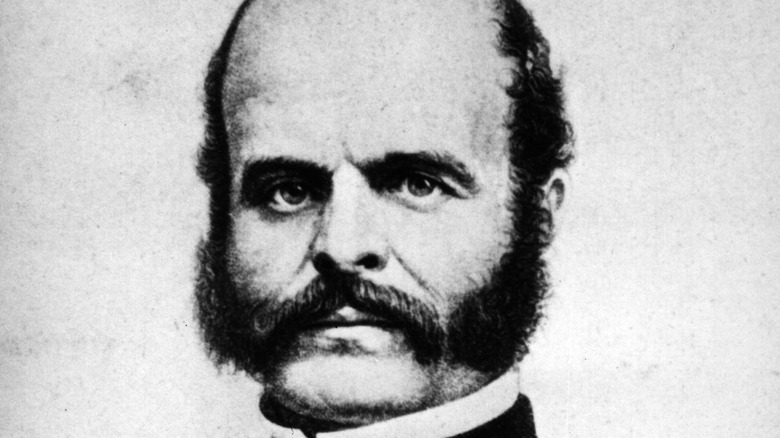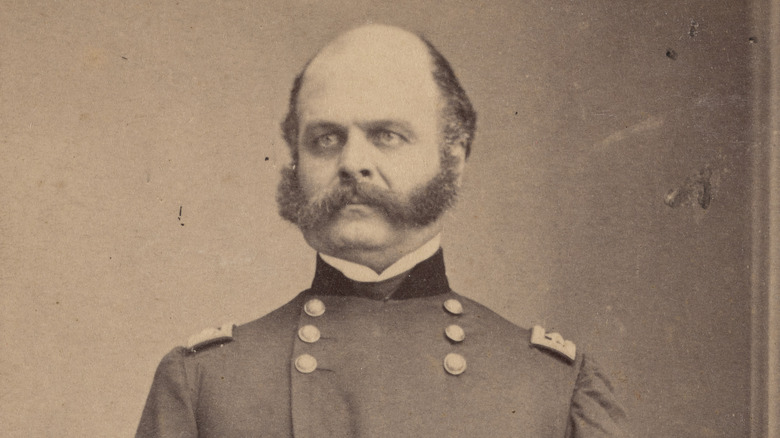Who Was The Sideburn Named After?
Iconic hairstyles can date back much further than you might think. The legendary mullet, as History reports, enjoyed its heyday in the 1980s, but it seems to date all the way back to ancient times. In "The Iliad," Homer writes of "the sprinting Abantes ... their forelocks cropped, hair grown long at the back," indicating that this hardy band of warriors had been rocking mullets in the days of ancient Greece, centuries before Billy Ray Cyrus or anybody else. Sideburns are an optional extra, an intriguing accessory to any mullet, and they have their own fascinating legacy to consider.
According to Merriam-Webster, the name "sideburns" is a little bit unfair, and is doing Ambrose Burnside, the man they were named after, a bit of an injustice. After all, it indicates that burnsides might be a more accurate — if sillier — name for them. In fact, it seems, this is what they were actually called when they first came into fashion.
General Ambrose Burnside and his incredible facial hair
Ambrose Everett Burnside, Britannica reports, was born in Liberty, Indiana in May of 1824. In 1847, he left the prestigious U.S. Military Academy at West Point and served in the army until his resignation. Merriam-Webster adds that he spent the years before the American Civil War in weapons production, having patented the Burnside carbine.
He didn't enjoy the greatest record as a Union general. According to History, he was given command of the Union Army of the Potomac in November of 1862, a role that was taken from him around two months later. This decision was made following the Battle of Fredericksburg, in which his attempts at attacking General Robert E. Lee's fortified position repeatedly amounted to nothing (and cost around 13,000 of his soldiers' lives).
In Burnside's defense, the blame did not lie with him alone. As Historynet argues, his commanders also failed to coordinate efforts and the state of battle too. Also in Burnside's defense, he sported what might be the most magnificent muttonchops the world has ever seen. So glorious was his facial hair, in fact, that (per Merriam-Webster) his thick whiskers and equally thick mustache seemingly came to be known as "Burnside whiskers" during his lifetime.
The legacy of sideburns
According to Britannica, Burnside became Rhode Island's governor in 1866, then went on to become a Senator in 1875. He died in September 1881, by which time his flamboyant "Burnside whiskers" had long become the stuff of legend. It was in imitation of him that the fashion for exuberant whiskers along the side of the face spread across the United States. As Britannica states, they came to be known as side whiskers, and from there it wasn't very far at all to the term "sideburns."
Naturally, Burnside was far from the only person to ever proudly sport sideburns. The BBC's "A Hairy History Of Sideburns" shows that Alexander the Great wore sideburns, as depicted in a mosaic at Pompeii. By Burnside's time, they were called things like "Piccadilly weepers" (London's Piccadilly being a place where many proud whisker-bearers would be seen), but it's Rhode Island's Burnside who was the inspiration for their familiar name.


